NCERT Solutions for Class 4 EVS Chapter 1 - Going To School
Page No - 2
Let us do
Ques 1: Observe pictures 1 and 2. In the pictures, children are pulling the buckets from the well. Can you tell the difference in both the pictures? Which would be easier – using the pulley or not using it to lift things? Ans: In picture 1, the child is trying hard to pull the bucket with his hand. In picture 2, he is pulling the bucket easily with the help of the pulley. A pulley makes it easier to lift things.
Ans: In picture 1, the child is trying hard to pull the bucket with his hand. In picture 2, he is pulling the bucket easily with the help of the pulley. A pulley makes it easier to lift things.
Ques 2: Look around you – where all do you see the use of pulleys? List them.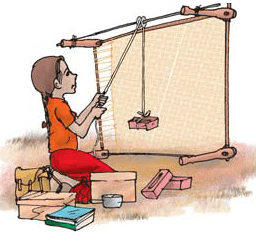 Ans:
Ans:
Pulleys are used:
- to fetch water from wells
- in moving trolleys
- in elevators
- in flagpoles to hoist flags
- to lift heavy loads in construction sites
- in moving curtains in theatres
- in cranes and bulldozers
Hint: This is a sample answer. The answer of the students may vary according to their observations and experiences.
Ques 3: With the help of a pulley, try and lift various things, as shown in the picture.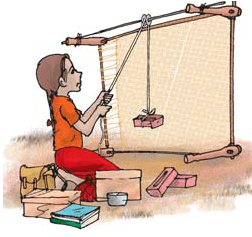 Ans:
Ans:
Hint: The purpose of this section is to make students interact actively with their surroundings and perform activities to observe facts. This involves experimentation and logical deductions. Keeping this in mind, it is strongly recommended that the students perform the activity and draw conclusions on their own.
Page No - 3
Ques 1:
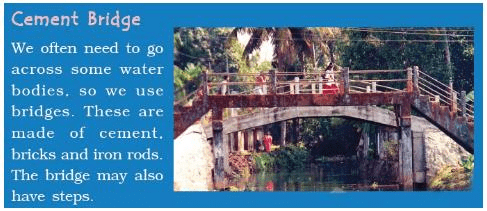
(a) How is this bridge different from a bamboo bridge?
Ans:
- A cement bridge is made from cements, bricks and iron rods, whereas a bamboo bridge is made of bamboo sticks, ropes and poles.
- A cement bridge is stronger than a bamboo bridge.
- More people can cross a cement bridge at a time.
(b) How many people do you think can cross the bridge at one time?
Ans: Many people can cross the bridge at one time
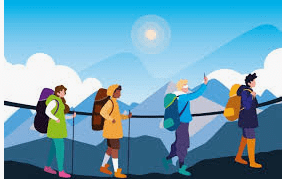
Hint: It depends on the length and strength of the bridge
You have seen how children use different kind of bridges, to cross rivers and other uneven areas to reach school.
(c) If you had a chance, which bridge would you like to use? Why?
Ans: I would like to use a bridge made of cement, as it is more safe and easy to cross and walk on.
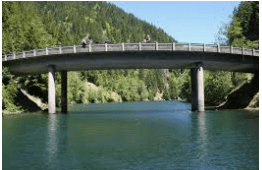 Hint: The purpose of this section is to enhance students’ imagination and sense of observation. Keeping this in mind, it is suggested that the students use their own ideas to write the answer.
Hint: The purpose of this section is to enhance students’ imagination and sense of observation. Keeping this in mind, it is suggested that the students use their own ideas to write the answer.
(d) Do you have to cross any bridge on the way to your school? If yes, what is the bridge like?
Ans: There is no bridge on the way to my school. But I cross many cement bridges in my city.
Hint: The purpose of this section is to make the students interact actively with their surroundings. The answer may vary depending on the observation and experience of each student. It is suggested that students prepare the answer on their own.
(e) Find out from your grandparents, what kinds of bridges were there when they were young.
Ans: Only-a few bridges made of bamboo or wood were left, when my grandparents were young. Most of the bridges at that time also were made of cement.
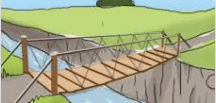
(f) Is there any bridge near your house? Find out more about the bridge.
Ans: No, there is no bridge near my house
Hint: The purpose of this section is to make the students interact actively with people of previous generations and get to know about their lifestyles. The answer may vary depending on the observation of each student. It is suggested that the students prepare the answer on their own.
Page No - 4
Ques 1: Where is the bridge – over water, over a road, between two mountains or somewhere else?
Ans: The bridge is over water.

Hint: The purpose of this section is to encourage the students to observe their surroundings. It is highly recommended that the students prepare the answer on their own.
Ques 2: Who all use the bridge? Is it used by people on foot and also by vehicles and animals?
Ans: The bridge is made of cement and steel girders, so, it is used by all, i.e by people on foot, vehicles and animals
Hint: The purpose of this section is to make the students interact actively with their surroundings and observe the facts. Keeping this in mind, it is strongly recommended that the students prepare the answer on their own
Ques 3: Does the bridge seem to be old or is it new?
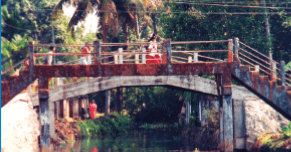 Ans: The bridge is not very old.
Ans: The bridge is not very old.
Hint: The purpose of this section is to make the students develop their power of observation and understanding of their surroundings. Keeping this in mind, it is strongly recommended that the students prepare the answer on their own.
Ques 4: Find out what materials are used in making this bridge. List some of them.
Ans: It is a bamboo bridge, then bamboo sticks, ropes and poles have been used in making it.
If it is a cement bridge, then cement, bricks and iron rods have been used in making it.
Hint: The purpose of this section is to make the students interact actively with their surroundings and observe the facts. Keeping this in mind, it is strongly recommended that the students prepare the answer on their own.
Ques 5: Draw a picture of the bridge in your notebook. Do not forget to draw the train, vehicles, animals or people who cross the bridge.
Ans:
Hint: The purpose of this section to is enhance students’ creativity and imagination. Keeping this in mind, the answer to this question is not provided and it is highly recommended that the students prepare the answer on their own.
Ques 6: Imagine what difficulties there would be, if the bridge was not there?
Ans: If there was no bridge over the river, people would have found it difficult to cross the river. They would have used boats to reach their schools, offices etc., which would have consumed more time.
If there was no bridge over the road, people would have walked across the busy road, which could have led to fatal accidents.
Page No - 5
Ques 1: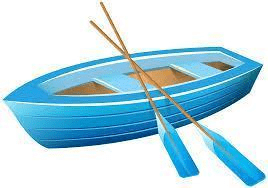 A. Have you seen any other kind of boats?
A. Have you seen any other kind of boats?
Ans: Yes, I have seen other kinds of boats. Some of them are:
i) Paddle boat
ii) Row boat
iii) Motor boat
iv) Houseboat
Hint: This is a sample answer. The answer may vary according to the students’ observations and experiences. It is highly recommended that students prepare the answer on their own.
B. Can you think of other ways by which we can travel on water?
Ans:We can travel on water by ship, steamer, water scooter, raft, etc.
Ques 2: 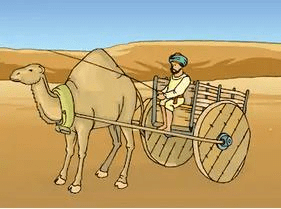 A. Have you ever sat in a camel-cart or horse carriage (tonga)? Where? Did you climb on it yourself, or did someone help you?
A. Have you ever sat in a camel-cart or horse carriage (tonga)? Where? Did you climb on it yourself, or did someone help you?
Ans: Yes, I have sat on a horse carriage in my grandmother’s village. My father helped me to climb on it.
Hint: This is a sample answer. The answer may vary according to the students’ experiences.
B. How did you feel riding in the cart? Also share your experience in the class also.
Ans: I enjoyed the horse-carriage ride very much.
Hint: This question requires the students to use their own experiences and observances. Keeping this in mind, it is strongly recommended that the students prepare the answer on their own.
Page No - 6
Ques 1: 
A. Do you have bullock-carts where you live?
Ans:
Hint: The purpose of this section is to encourage the students to observe their surroundings. The answer may vary according to the students’ observations. It is highly recommended that the students prepare the answer on their own.
B. Does it have a roof ?
Ans: Yes, some of them have but many don’t have a roof.
Hint: The purpose of this section is to encourage the students to observe their surroundings. It is highly recommended that the students prepare the answer on their own.
C: What kind of wheels do they have?
Ans: They have wheels made of wood with iron rims.
Hint: The purpose of this section is to encourage the students to observe their surroundings. It is highly recommended that the students prepare the answer on their own.
D: Make a drawing of the cart in your notebook.
Ans:
Hint: The purpose of this section is to enhance the creativity of the students. It is highly recommended that the students develop the answer on their own.
Ques 2:
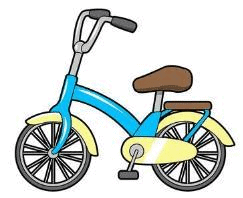 A. Can you ride a bicycle? If yes, who taught you to ride?
A. Can you ride a bicycle? If yes, who taught you to ride?
Ans: Yes, I can.
Hint: The purpose of this section is to encourage the students to share their experiences. It is highly recommended that the students prepare the answer on their own.
B. How many children come on bicycles to your school?
Ans: About 100 children come on bicycles to our school.
Hint: The purpose of this section is to encourage the students to observe their surroundings. It is highly recommended that the students prepare the answer on their own.
Page No - 7
Ques 1: A. Do you have such vehicles in your area?
A. Do you have such vehicles in your area?
Ans: No, this type of vehicles are not in my area, but other type of Jugad vehicles are there in my area.
Hint: The purpose of this section is to encourage the students to observe their surroundings. It is highly recommended that the students prepare the answer on their own.
B. What do you call them in your area?
Ans: We call them Diesel pump set Cart.
Hint: The purpose of this section is to make students interactive and to encourage them to observe their surroundings. It is highly recommended that the students prepare the answer on their own.
C. Would you like to ride in something like this? Why?
Ans: Yes, I like to ride in something like this, because that would be great fun.
Hint: The purpose of this section is to enhance the students’ imagination and to encourage them to share their ideas. The answer may vary from student to student. It is highly recommended that the students prepare the answer on their own
D. Can you tell why it is called Jugad?
Ans: Jugad means something that is made to serve a purpose on temporary basis.
Jugad, which is used as a means of transport in Gujarat, makes use of waste materials. The front part of a motorcycle is attached to wooden planks that are used to make a carriage at the back. A jugad is used to carry passengers from one place to another.
Page No - 8
Ques 1: Have you ever been in a thick jungle or any such place?
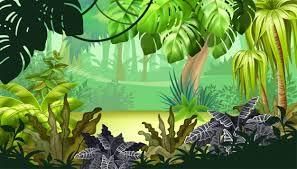 Ans:
Ans:
Hint: The purpose of this section is to encourage the students to observe their surroundings and share their experiences. The answer may vary from student to student. It is highly recommended that the students prepare the answer on their own.
Ques 2: Write your experiences in your notebook.
Ans:
Hint: The purpose of this section is to enhance the creativity and the thinking ability of the students. The answer may vary according to the students’ experiences. It is highly recommended that the students prepare the answer on their own.
Ques 3: Can you recognise some birds by their sounds? Can you imitate the sounds of some birds? Do it.

Ans: Yes, I can recognise birds such as crow, sparrow, eagle, owl, parrot, peacock, duck and hen by their sounds. I can imitate the sounds of a crow, an owl, a parrot and a duck.
Hint: This is a sample answer. The answer may vary according to the students’ experiences and abilities.
Ques 4: Have you ever seen so much snow? Where? In films or somewhere else?
Ans: During winters, the hilly regions are covered with snow. We often see such places in films.
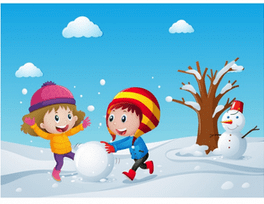
Hint: The purpose of this section is to make the students interactive and encourage them to observe their surroundings. The answer may vary according to the students’ observations. It is highly recommended that the students prepare the answer on their own.
Page No - 9
Ques 1: Do you think that such places have snow all the time? Why?
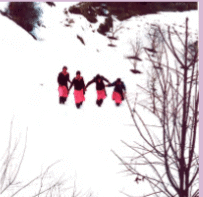
Ans: No, such places do not have snow all the time. Hilly areas are covered with snow mainly in the winter season due to low temperature. However, in the summer season, the snow melts due to high temperature.
Ques 2: Do you face difficulties on the way to your school?
Ans:
Hint: The purpose of this section is to make students interactive and encourage them to observe their surroundings and enhance their thinking. The answer may vary according to the students’ observations and experiences. It is highly recommended that the students prepare the answer on their own.
Ques 3: Which is the best month, in which you like to go school? Why?
Ans: 
I love going to school in the month of December because of the cold weather. The school timings are comfortable in this month. Various celebrations like Christmas and New Year are also held in our school during this month. Also, the month ends with the beginning of our winter holidays.
Hint: This is a sample answer. The answer may vary based on the students’ thoughts and experiences. It is suggested that the students develop the answer on their own.
Page No - 10
Talk About It
Ques 1: Do you also have punishment in your school? What kind?
Ans:
Hint: The purpose of this section is to enhance the thinking and understanding of the students and encourage them to share their experiences. The answer may vary from student to student. It is highly recommended that the students prepare the answer on their own.
Ques 2: Do you think that punishment should be there in schools?
Ans:  There should not be any kind of punishment in schools because of the following reasons:
There should not be any kind of punishment in schools because of the following reasons:
i) It can develop fear and inferiority complex inside a child’s mind.
ii) It may refrain the child from attending school properly.
iii) It can hinder his/her physical as well as mental growth.
If the performance of a student is poor, parents and teachers should guide him/her. In some cases, the help of an education counsellor may also be required.
Ques 3: Is punishment the only solution to misdeeds? Make some rules for school to prevent misdeeds.
Ans: No, punishment is not the only solution to misdeeds.
Some rules that can help schools to prevent misdeeds are as follows:
- Students should not bring costly items or money to the school.
- Teachers should write the daily report of each student in his or her diary so that the parents are aware of the daily activities of their children.
- Students must be punctual in attending classes.
- Students should not be allowed to leave the school before the classes get over without informing their parents.
Ques 4: Draw a picture of your ‘dream school’ in your notebook and write about it.
Ans: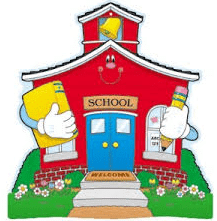
Hint: The purpose of this section is to enhance students’ imagination and creativity. Keeping this in mind, it is suggested that they use their own ideas and imagination to develop the answer.
|
53 videos|215 docs|54 tests
|
FAQs on NCERT Solutions for Class 4 EVS Chapter 1 - Going To School
| 1. What is the importance of education in our society? |  |
| 2. How does going to school benefit children? |  |
| 3. What are the challenges faced by children in accessing education? |  |
| 4. How does education contribute to a person's overall development? |  |
| 5. What are the different types of schools available for children? |  |

|
Explore Courses for Class 4 exam
|

|


















